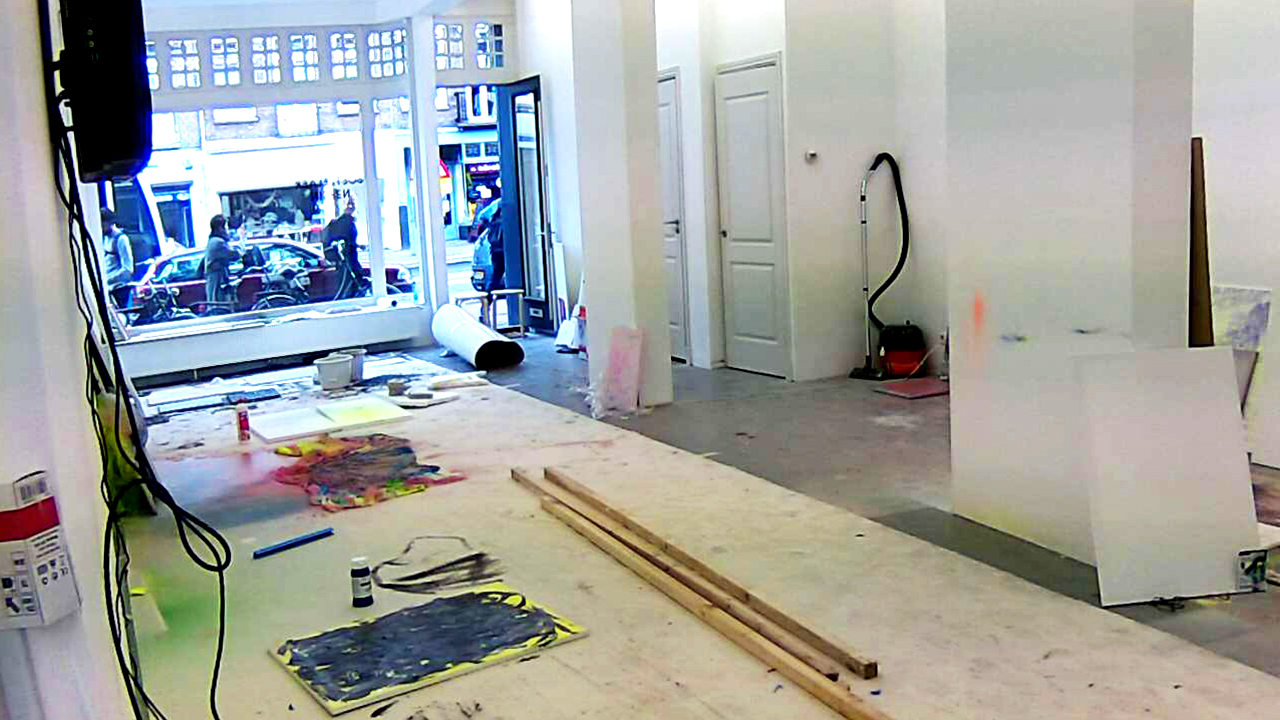Jonas Lund‘s exhibit “Studio Practice” opens in Amsterdam this week, but none of the work is “finished” yet. Instead of making a bunch of stuff and hanging it in a clean white cube, Lund has hired other artists to follow his 300-page guidebook.
They’re making objects in the gallery under constant live-streaming surveillance. As each work is completed, a respected fourteen-person panel will vote on which work Lund should sign, but that’s just the tip of his deliberately transparent, contemporary art theory and social media-assisted process-iceberg.

The hired artists can make whatever they want, as long as it’s inspired by the guidelines. “The four assistants started working on August 20th and have been working four days a week from 1pm to 6pm since,” Lund tells ANIMAL. (That’s 7am to 12pm EST, if you want to see them in action tomorrow.)
“The 300 page book starts with an essay titled How To Make Art covering basic tips and tricks for how to best position and produce works within the contemporary art world and market,” Lund says. “After that comes a comprehensive overview of mostly big and flat processed based works that are both very aesthetically pleasing and perform very well on the market. Further into the book there’s a canvas sizing guide, a general visual inspiration section and a broad overview of my work with my insider commentary on top.”

After the artist finishes a piece, they snap a photo immediately and submit it to the gallery, which puts it on the website studio-practice.biz/. From there, the works are voted on by a 14 person advisory board that features art world heavy hitters like Steve Turner (Steve Turner Contemporary) and Simon De Pury (Work of Art, formerly Phillips De Pury). They provide commentary and recommend which works Lund should sign. After their appraisal, the price will be determined by “the size of the work and the popularity of the pieces on Instagram/the Studio-Practice website.”

Having assistants physically produce an artist’s work is nothing new, but in a time when almost everyone does it to some degree, this exhibition has a refreshing level of transparency. Lund isn’t hiding the fact that he’s not “making” anything, just giving suggestions. “In deviating from the traditional practice of producing art within the confines of a studio and then showing it publicly in a gallery, Studio Practice aims to both demystify and embrace the mechanisms of art production and distribution,” he elaborates.
That transparency extends further by publishing the contracts Lund has made with the artists. The issue of paying artists, assistants and interns is a recurring topic in art. Lund is paying the artists 5% commission on pieces that are selected and sold, which follows the well-intentioned efforts of The Jogging. But Lund is going further and paying 10 Euros ($12) per hour as well. Labor = Pay.
After all this process, the real question is why? “While Studio Practice questions notions of automation and labour, more central to the idea lies authorship and evaluation formulas,” Lund says. “How do we determine what is a successful work of art or not?” There’s been a lot of hand wringing over newer artists perhaps making work that they think will sell in a booming market, rather than the work they wanted to make. In this case Lund takes that pressure off of himself and hands the responsibility over to the commission-seeking assistant.
Since Lund often works with creating programs and automated processes as works of art, it makes sense that he would move into the physical world and try his hand at “programming” humans. If the program/guidebook ends up selling works of art, maybe he should consider publishing his secret formula.
If you want to keep up with the project you can follow Lund on Instagram or get notified of updates via the STUDIOPRACTICEBIZ account on YO. You’ll know there’s knew work when YO says, “YO.”




